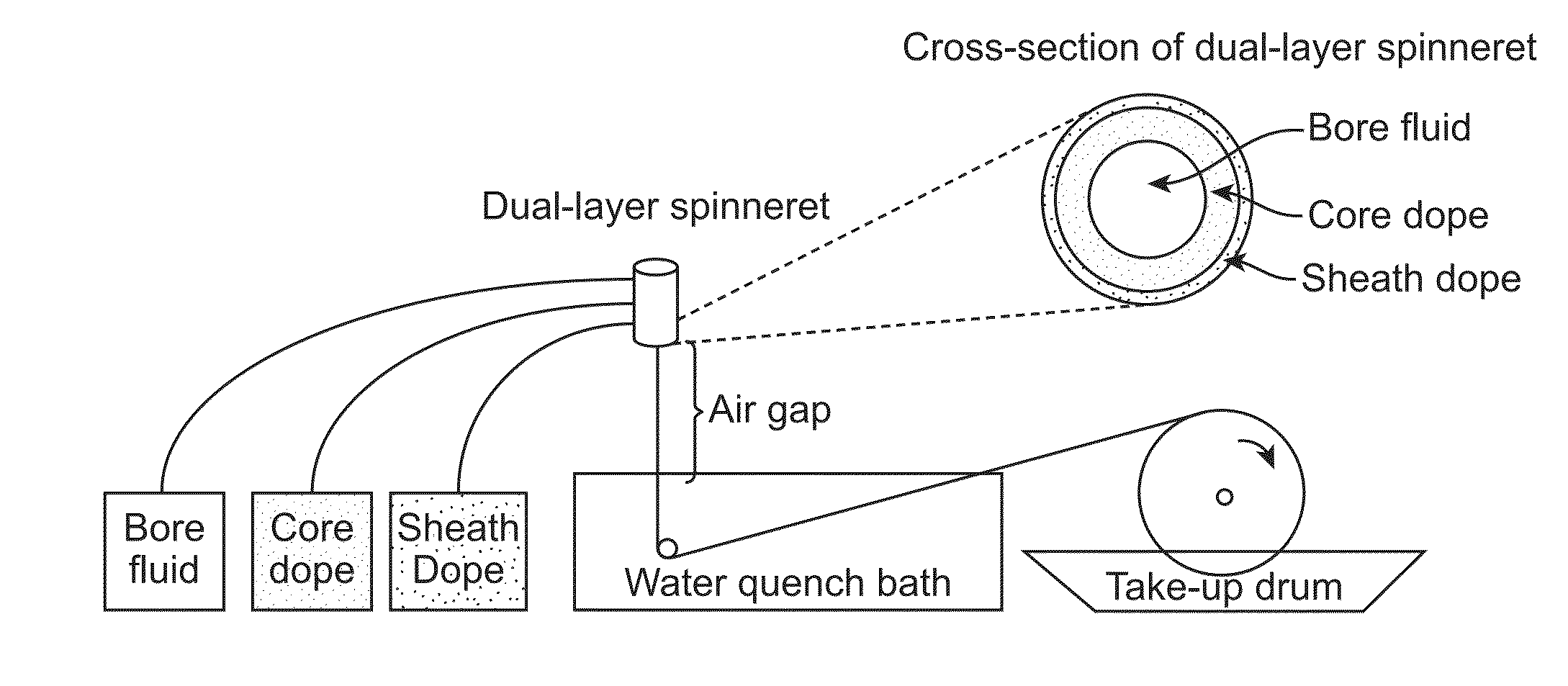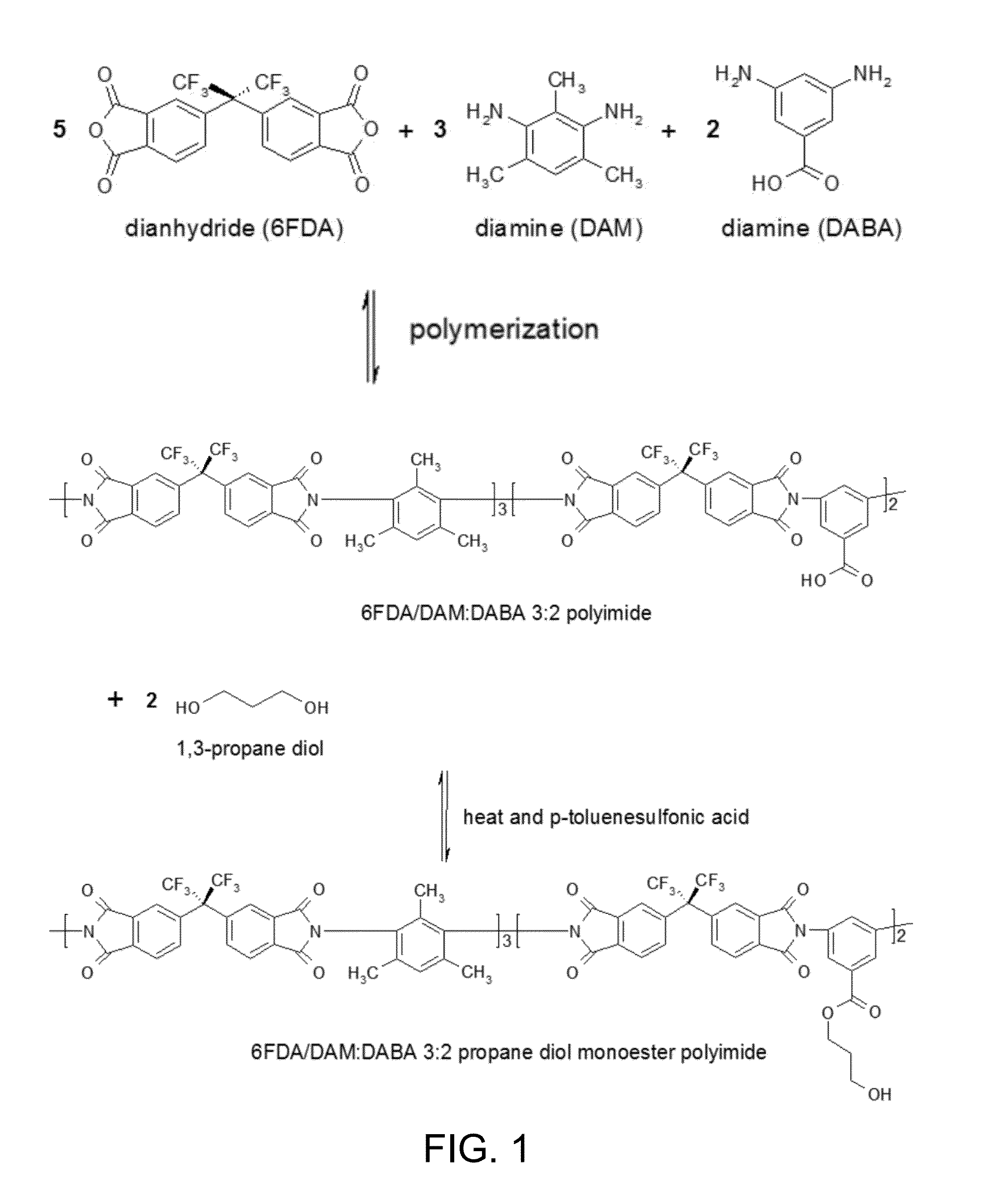Composite hollow fiber membranes useful for co2 removal from natural gas
- Summary
- Abstract
- Description
- Claims
- Application Information
AI Technical Summary
Benefits of technology
Problems solved by technology
Method used
Image
Examples
Embodiment Construction
[0046]Disclosed herein is a composite polymer membrane. A composite polymer membrane is generally made of a thin, selective outer layer of one polymer that is supported by a porous layer of another polymer. The thin, selective outer layer is optimized for a particular gas separation.
[0047]In its broadest aspect, the composite polymer membrane disclosed herein comprises a porous substructure or core layer, which comprises a polyamide-imide polymer or a polyetherimide polymer, and a selective outer layer, which comprises a polyimide polymer. In one embodiment, the core layer is a polyamide-imide polymer available under the tradename Torlon®, the structure of which is shown in FIG. 3. In another embodiment, the case layer comprises a polyetherimide polymer, e.g., available under the trade name Ultem®. The polyimide polymer is a 6FDA based polyimide.
[0048]Molecular transport across the composite polymer membrane differs between the porous substructure or core layer and the selective out...
PUM
| Property | Measurement | Unit |
|---|---|---|
| Volume | aaaaa | aaaaa |
| Covalent bond | aaaaa | aaaaa |
Abstract
Description
Claims
Application Information
 Login to View More
Login to View More - R&D
- Intellectual Property
- Life Sciences
- Materials
- Tech Scout
- Unparalleled Data Quality
- Higher Quality Content
- 60% Fewer Hallucinations
Browse by: Latest US Patents, China's latest patents, Technical Efficacy Thesaurus, Application Domain, Technology Topic, Popular Technical Reports.
© 2025 PatSnap. All rights reserved.Legal|Privacy policy|Modern Slavery Act Transparency Statement|Sitemap|About US| Contact US: help@patsnap.com



